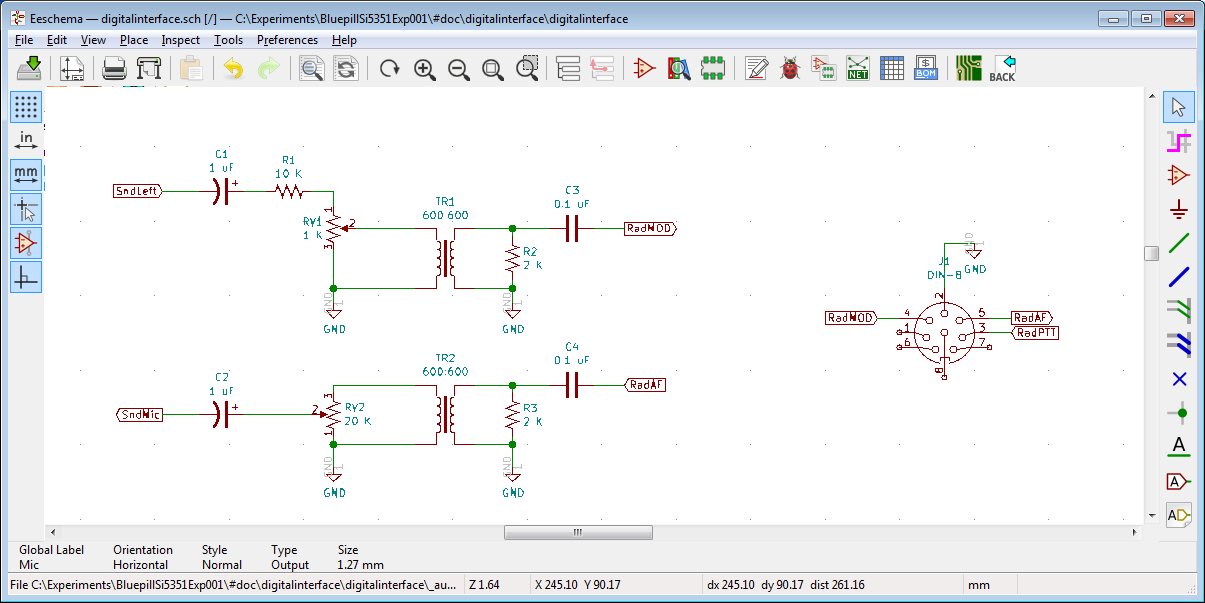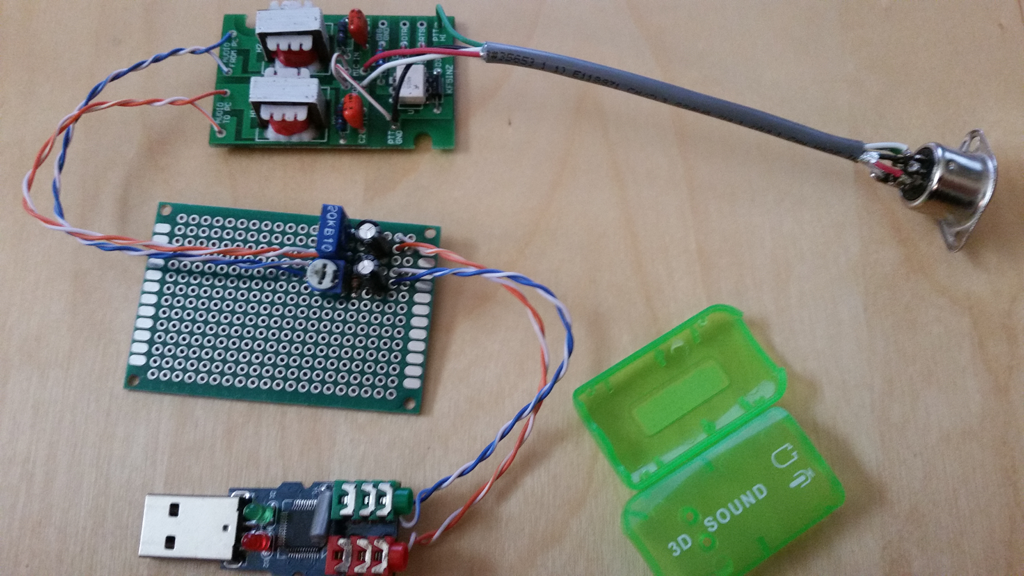Summary
The project was tested against a 'real' radio and digital interface into a PC running the WSJT-X software. It was verified to have modulated the WSPR signals correctly.
Deets
We're veritably at the end-of-the-road of implementing software for the WSPR beacon, save bug fixes or usability enhancements. We need to verify if it works. I don't want to actually put it on the air because it might not be working.
What I decided to do was use my HF radio (an IC-756PROiii) with the WSJT-X program from the creators of the digital mode. However, the radio just down-converts signal to AF; there needs to be something else that gets in into the computer. (I know that some of the newer radios have this interface built-in, but mine does not.) The most common way of doing this is via the sound card.
I didn't want to tie up my regular sound card, but I had some years ago bought a cheap USB one. They still make them, they are called '3D Sound Adapter'. (I don't know why it is called '3D', because it just has a standard stereo plug.) I had been planning to do this for a while now, so I did a little mini-project of building this adapter. The gist is to adapt the 'sound card' via an attenuator to a pair of isolation transformers, which are then connected to the radio's 'Accessory' port.

I kludged this together:

The transformers can be had from Mouser for $2 each, or you can go for China for $0.40 each if you are willing to buy ten and wait (as I did). Use eBay to search for this item:
"Audio Transformers 600:600 Ohm Europe 1:1 EI14 Isolation Transformer"
and you'll probably find it.
The sound device can be found on eBay as well if you search this item:
"USB 3d Audio Sound Card Microphone Headset Adapter"
These run about $2-4 depending. The shell is easily separated so you can solder wires and not mess with the jack.
You tweak the trimmers to give a signal that doesn't cause clipping. Incidentally, the 20 K pot I used for the Mic input is a log taper. Both trimmers wound up being OK-ish in their mid positions, so not much tweaking was actually required. I suspect that I could just measure and not use trimmers for a 'production' unit, but I'm not sure. Maybe they should even be regular pots...
One other thing I also used was a Computer Aided Tuning (CAT) cable. This allows the computer to set the dial frequency and do other stuff, like key the transmitter (this saved me some circuitry, I originally planned to make a VOX-like PTT feature, hence the larger perfboard than required). If you search eBay for this item:
"USB CI-V CAT Cable For ICOM CT-17 IC-275 IC-756Pro Shortwave Radio"
you should be able to find one for about $10. It's nothing more than a USB-to-serial adapter, so if you have some of those lying around (and you should!) then you can whip one up with ease. I don't know the details, but I'm sure the web abounds with info. I prefer the FTDI parts, but my cable had a CH-340 and it works just fine.
Having stuck all that stuff together, and having configured WSJT-X to receive WSPR from folks around me, it was now time to try it out. But what for an antenna? Well, it turns out that I didn't need an antenna for this test. My open board project spewed out enough stray radiation that my nearby radio was easily able to pick it up without a proper antenna.
The signal was decoded successfully. I feel confident now that the software works, and the signal modulation is correct. Now I have to go analog and get it on the air. There are some things to consider, though: is there enough power, and is the signal clean enough to be legal? The first question is 'maybe', and the second is 'no'. The output of the synthesizer is a square wave and as such has far too much harmonic content to be legal.
Next
Filtering harmonics
 ziggurat29
ziggurat29
Discussions
Become a Hackaday.io Member
Create an account to leave a comment. Already have an account? Log In.